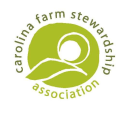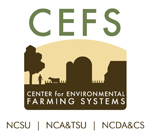Did you know it takes more than 60 days of repeating a process for it to become a habit for the average individual? Knowing this, I try to keep food rules simple so the habits that follow are easy to repeat day after day. None of these are set in stone. You won’t find me offering up “absolutes” because that would be almost impossible to maintain over your lifetime.
There are over 50 sites that I glance at daily, scouring them for healthy foods or interesting cooking methods or pairings that I think I can incorporate in my work. While it’s part of my “work”, the hard part comes when I test-cook. Usually it’s an average of 3 new recipes each week. Many are not my own. There are three tests for each recipe to move to a blog or a Facebook post:
- Would I be excited to make and eat it again?
- Would other people like it well enough to want to learn to make it?
- Is it flexible: Can you modify/use the final product in different ways?
That adds up to a lot of food in the house and you can’t depend on kids and dogs to help devour all of it. So, there’s this little but significant “24 hour rule“. It’s what keeps me from overindulging (most of the time). There are three tricks to making this rule work.
- Know who’s going to be around and willing to accept samples.
- Limit the number of foods that are high in calories, fat or sugar.
- Look for recipes that challenge your perceptions of healthy or help you modify your favorite recipes to be more healthy.
There is one last rule in our home that really came about as a function of raising kids and becoming aware of the way food affects our metabolism and brain development. Not to get on a soap-box, but I believe that many of the behavioral problems we see in people can be traced directly to the food ingested/not ingested each day.
- Try to eliminate “food” that you can’t trace back to something you can readily touch or smell in life.
This helps eliminate many of the chemicals or processes that get used in commercialized foods today. It certainly doesn’t cover everything, but it’s a good start. Growing up my kids couldn’t buy “foods” if they couldn’t read all of the ingredients (and later: tell me what they were). This worked for a really long time. Then they discovered they liked science. I’m not sure if it was because they really wanted to buy those disgusting products or if they simply enjoyed the topic or maybe they liked to show off.
As time passed, the rule had to be “tweaked” a bit. Now, “Mom” has to be able to read it and pronounce it correctly. Yes, I can see you rolling on the floor laughing! Who would ever set themselves up for that situation? Of course the parents out there know the result of this rule! I get many science lessons when I’m out with my kids. Right down to the process used to create some bizarre ingredient that some company scientist thought would make my food taste better.
Science is really not my thing so these lectures from my kids can be tedious. I studied design. I like pictures and forms. Pretty gardens, lovely foods, quilts, pottery, creative logos, clever visual charts, sculpture. You get the “picture”? But I try to be very patient, realizing that while explaining these chemicals and processes, my children are learning too. It happens in their subconscious mind as they begin to question why a company made these choices. They are teaching themselves. What’s even more important is: They will teach their peers by example. Influence can be a powerful tool.









